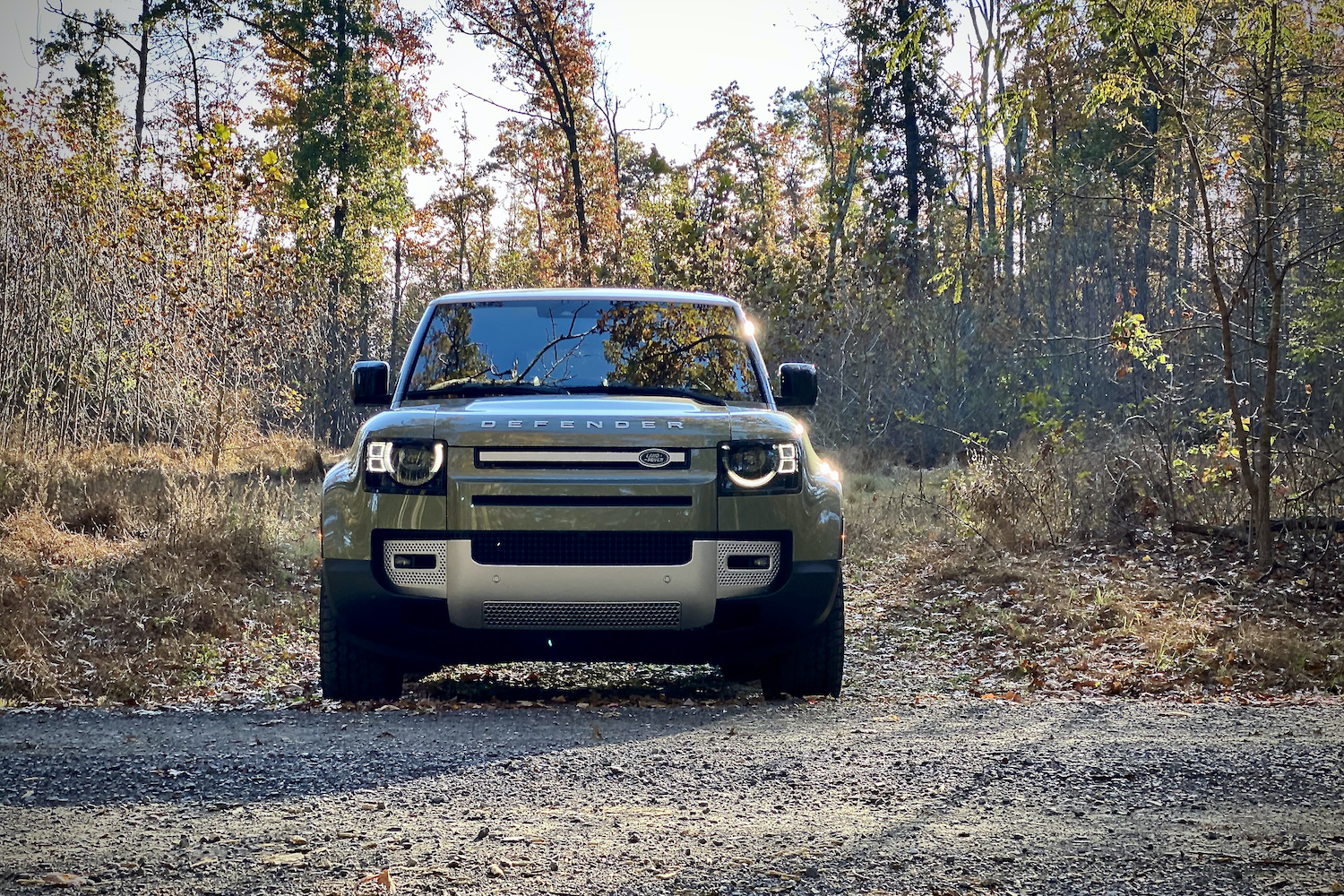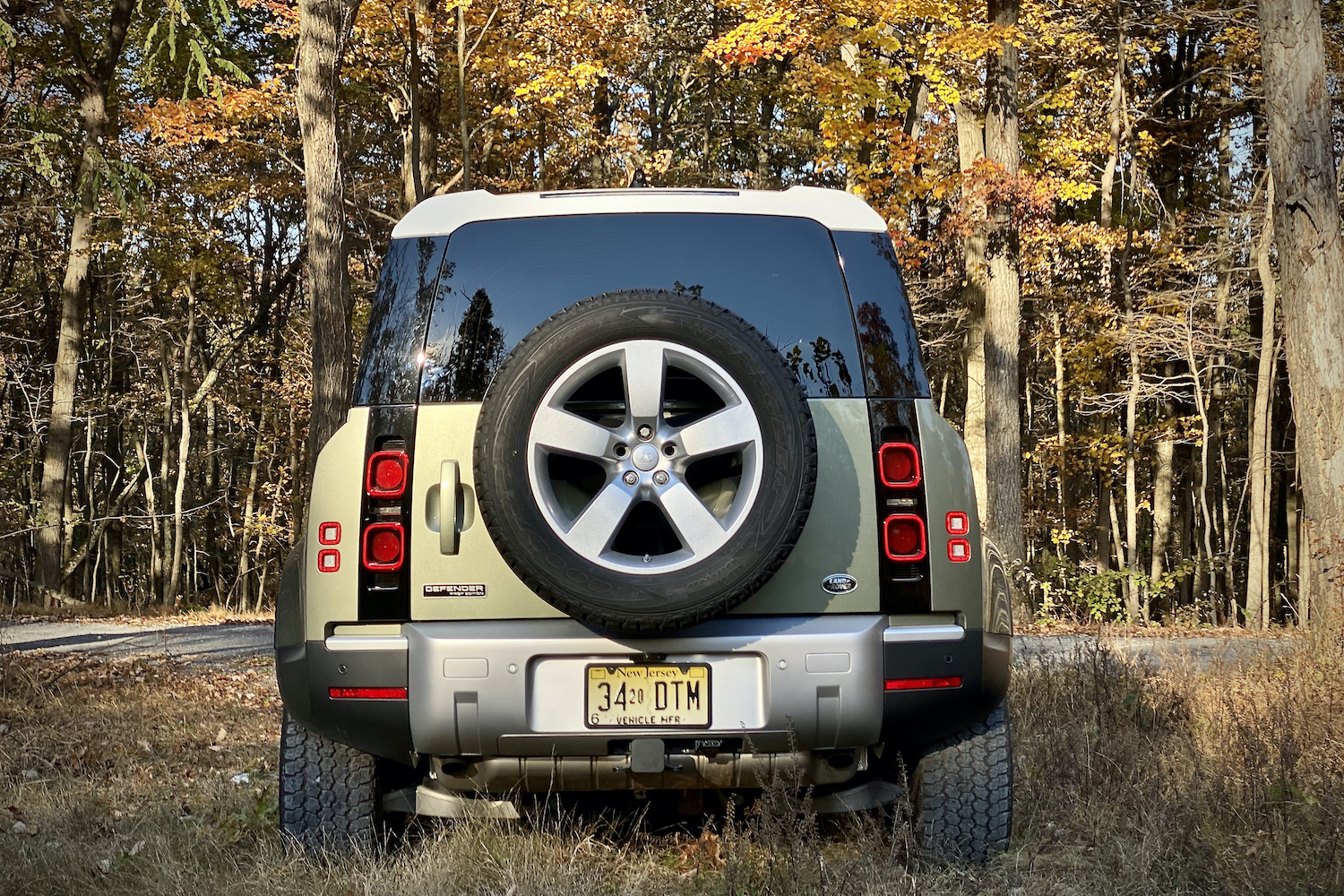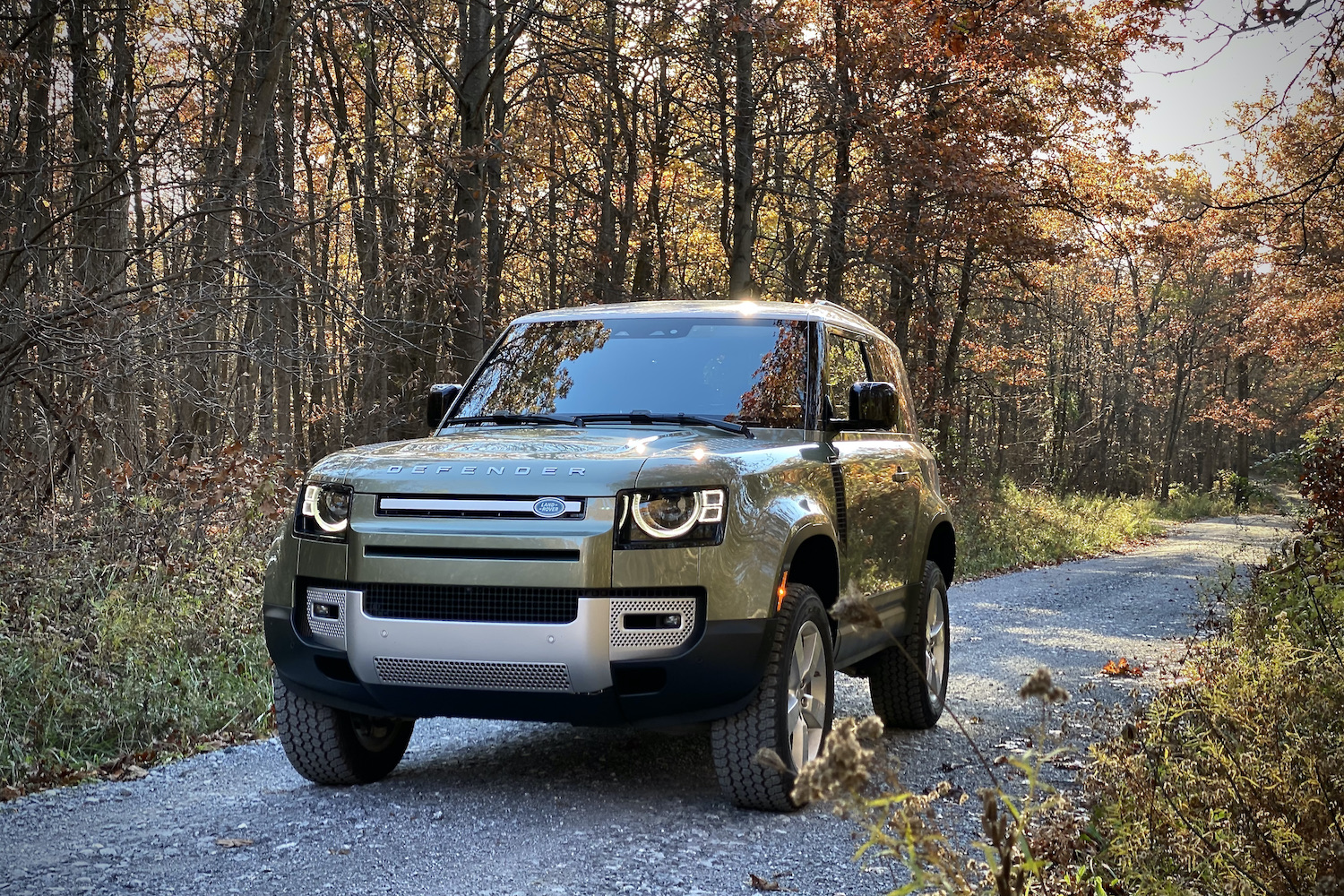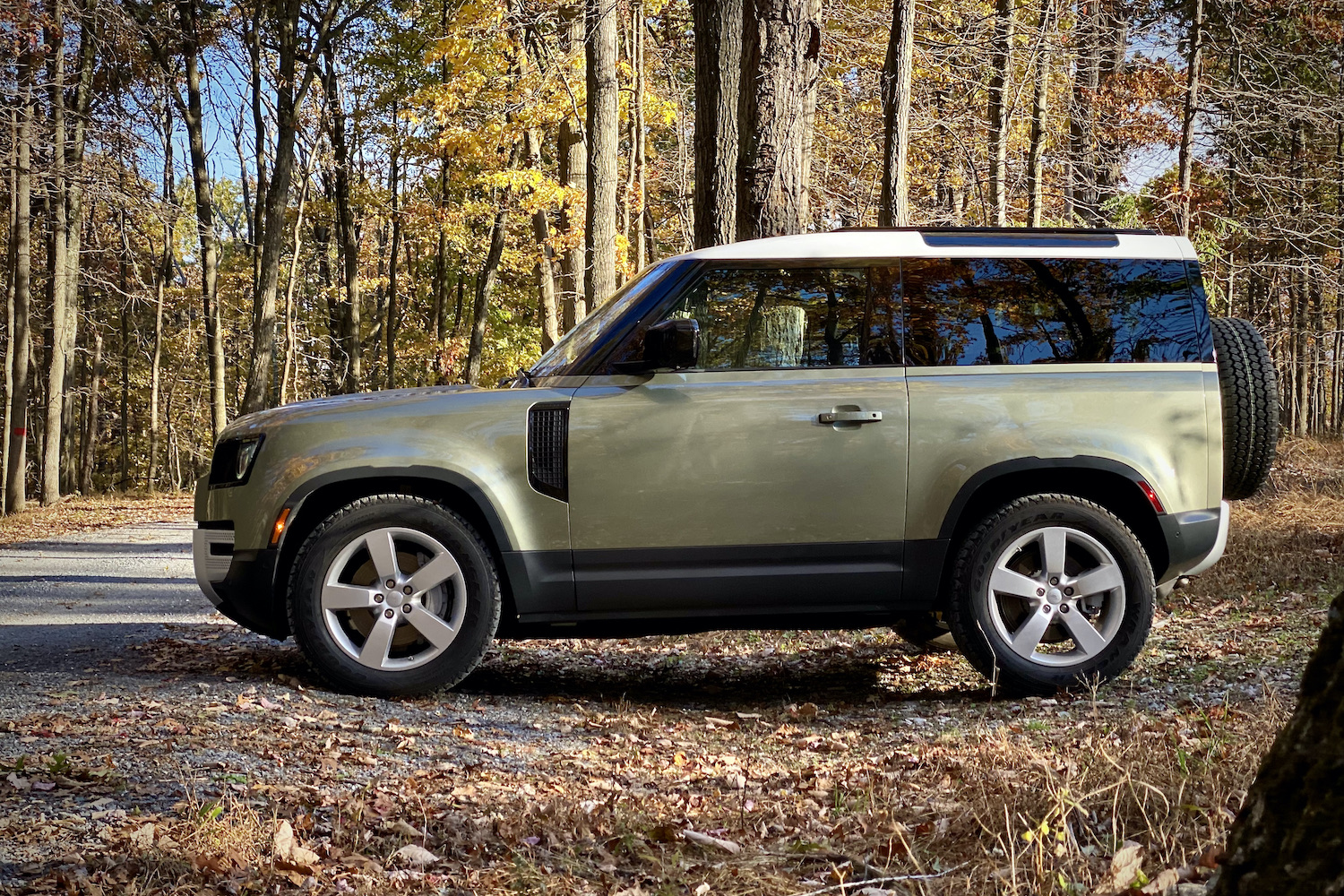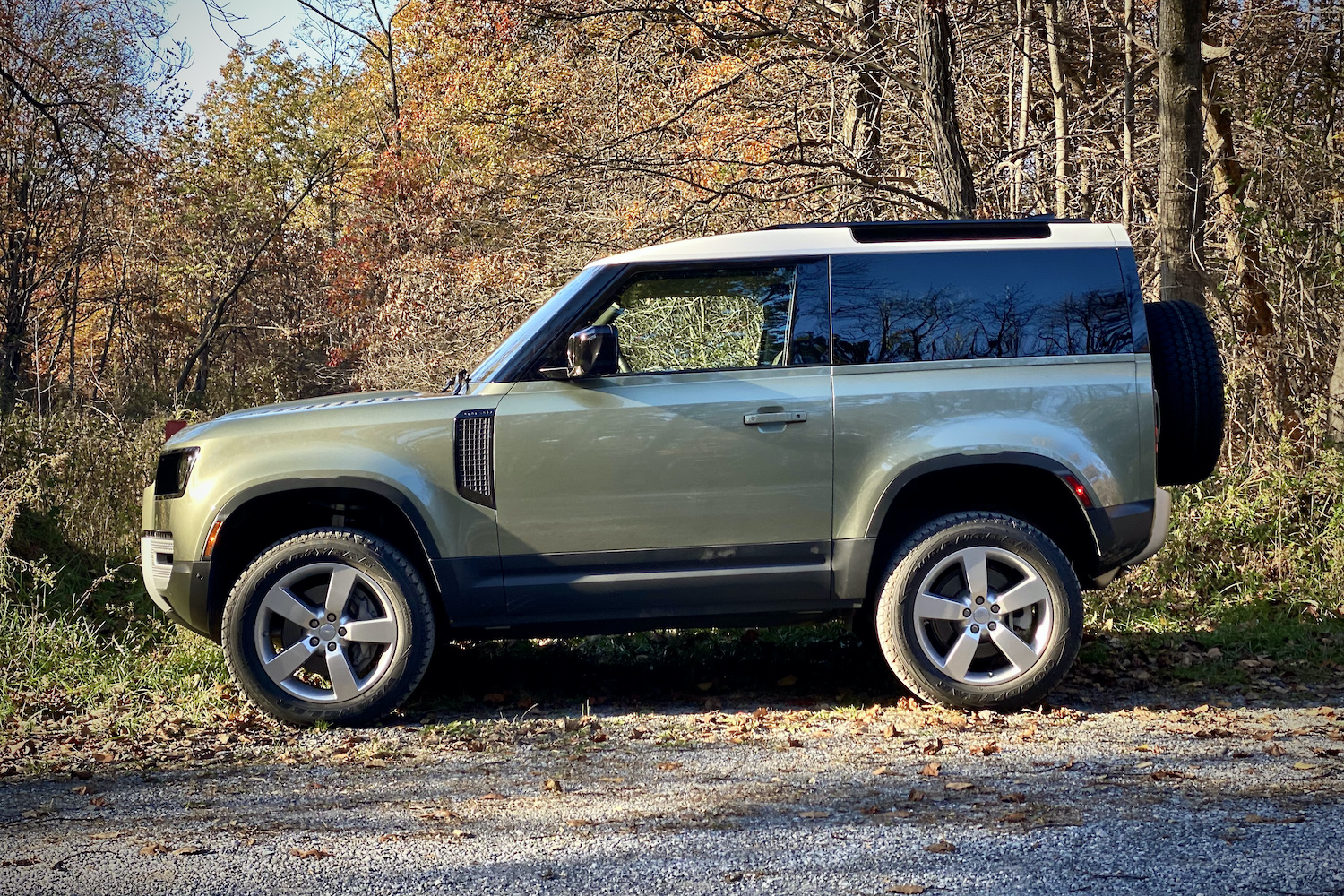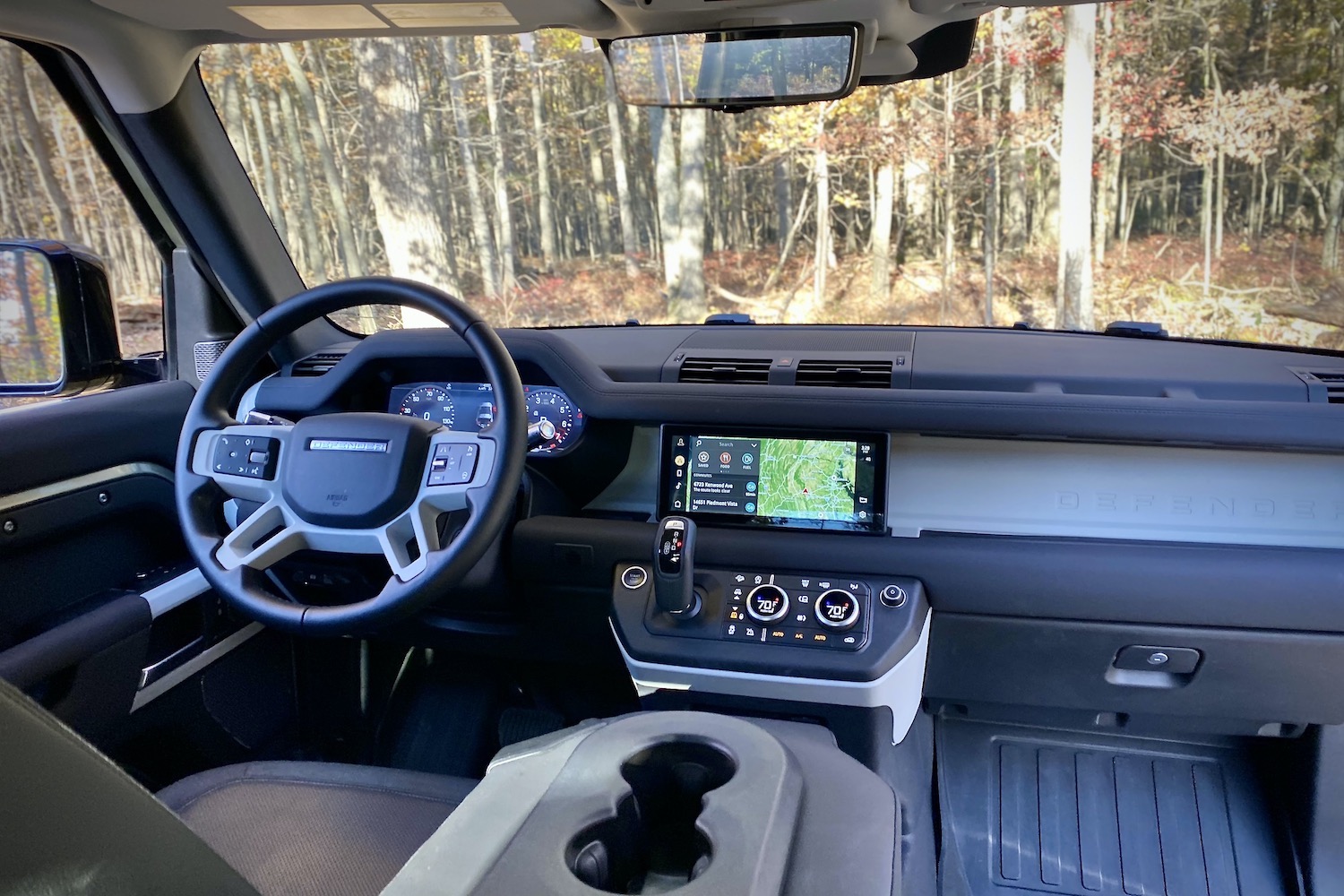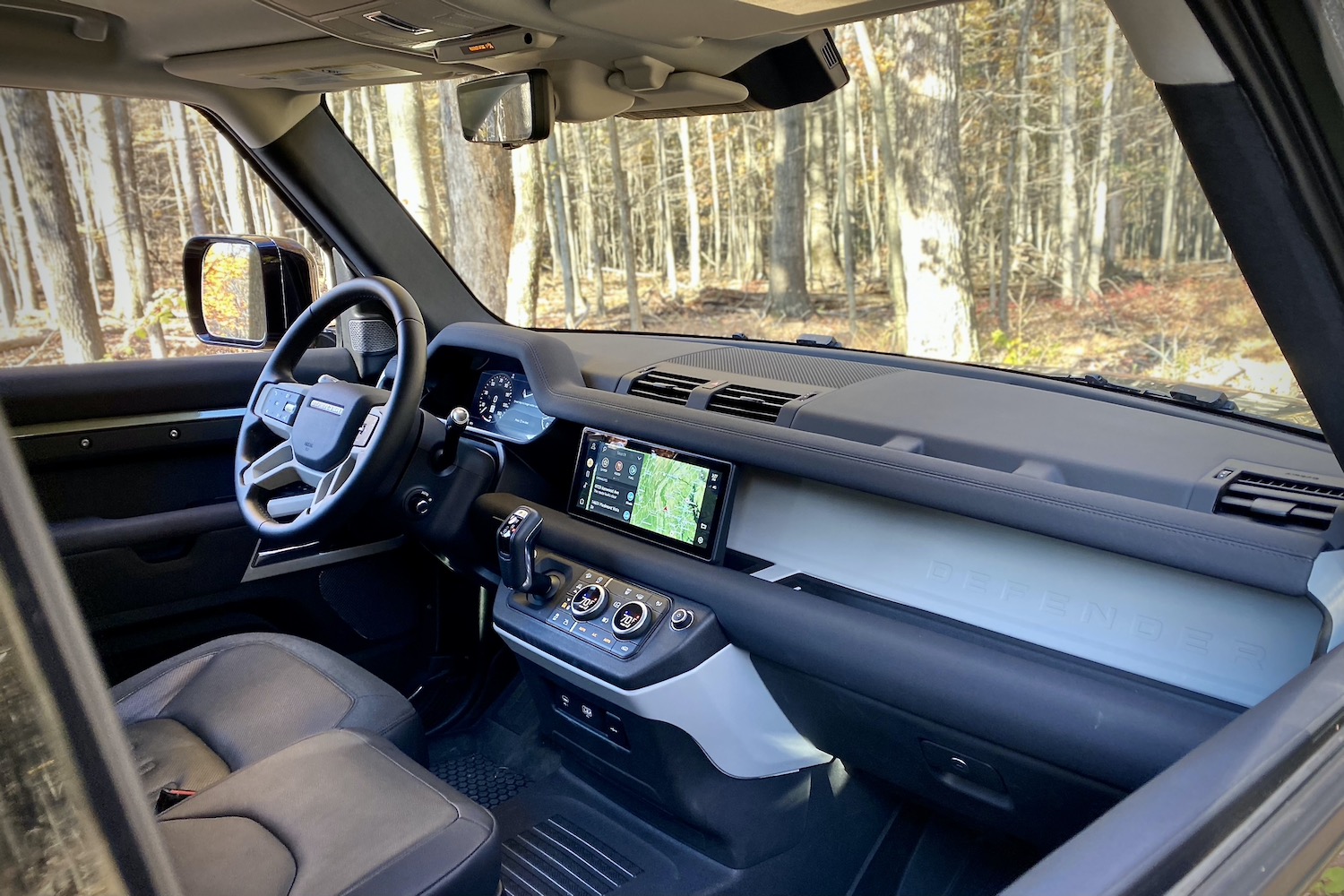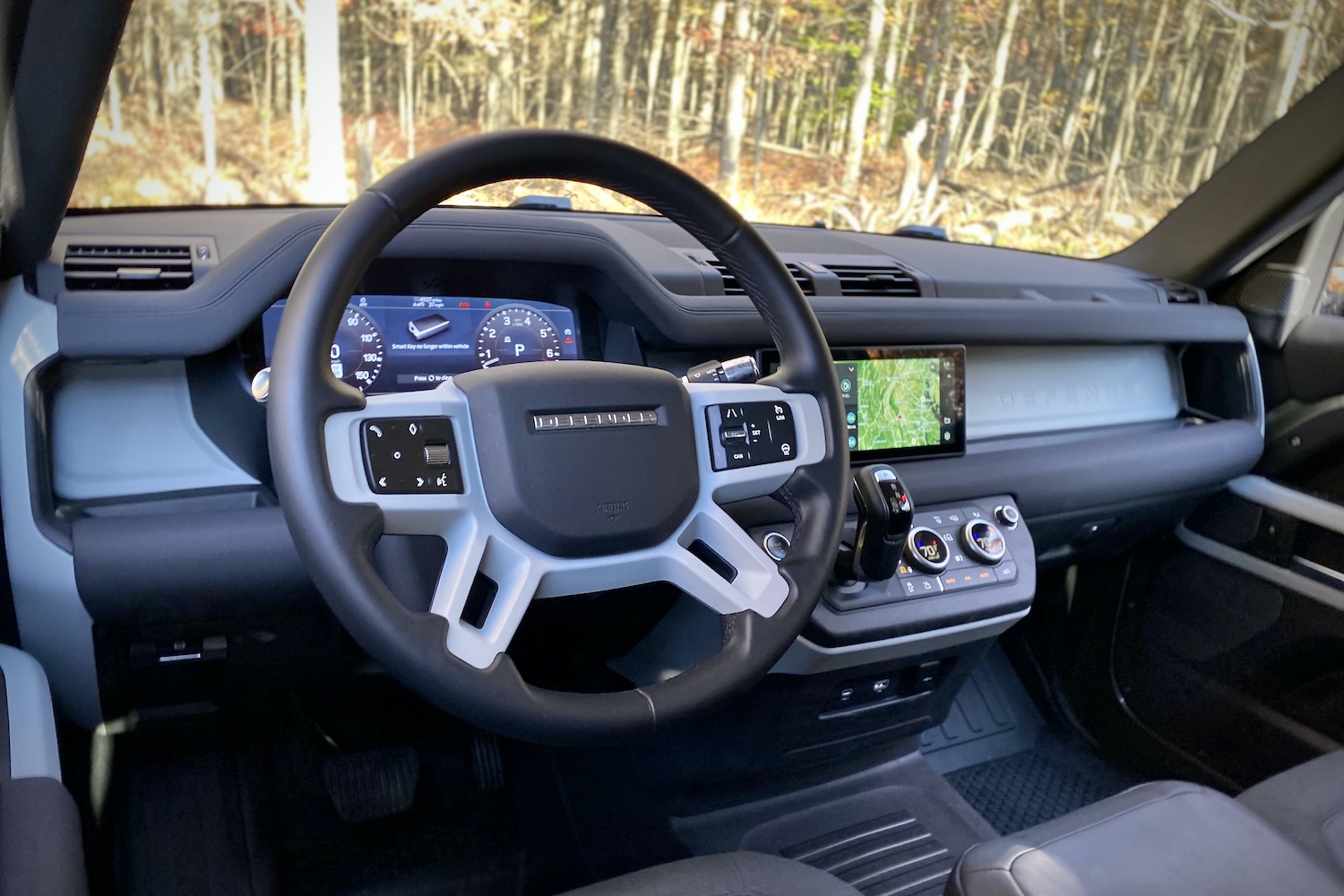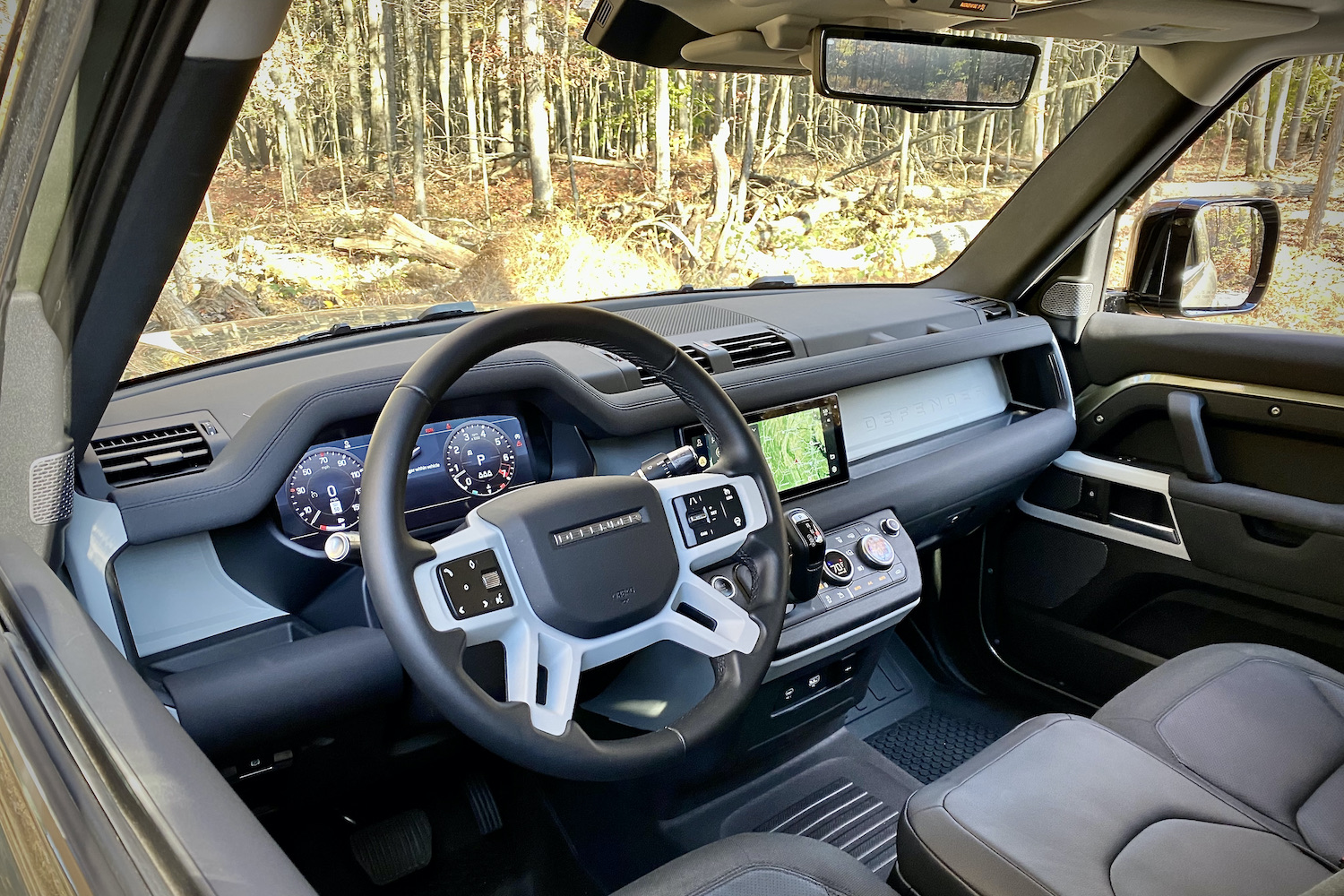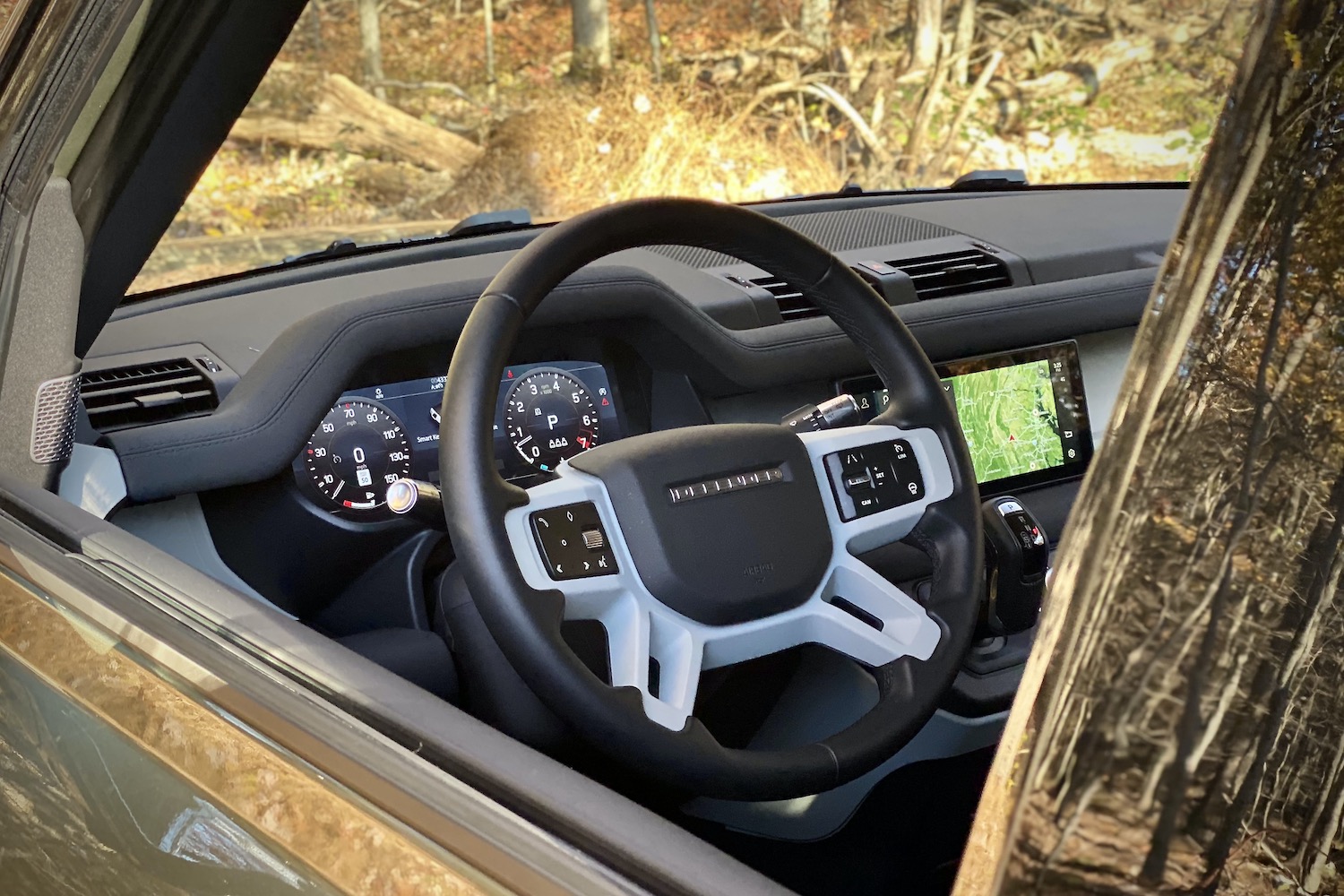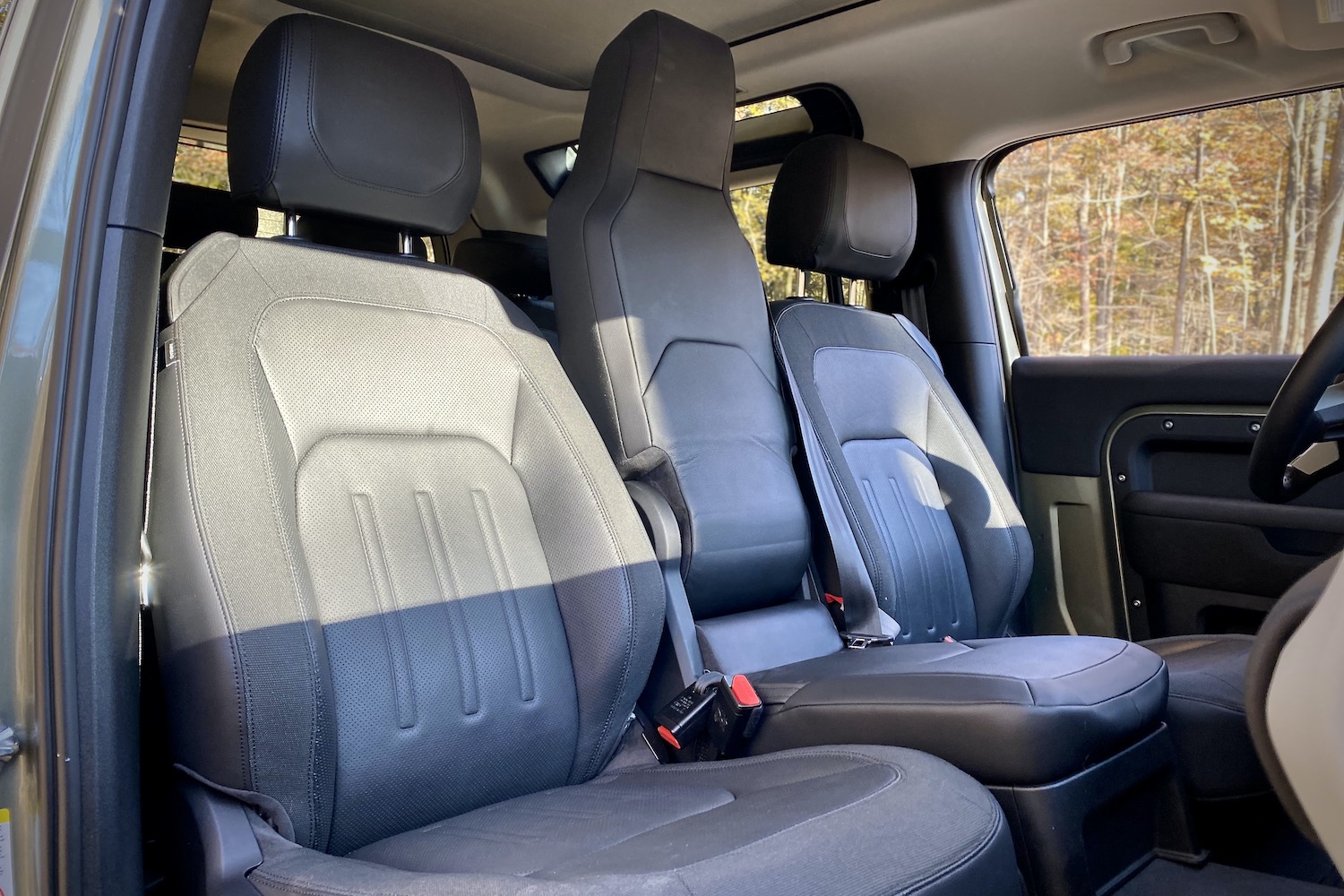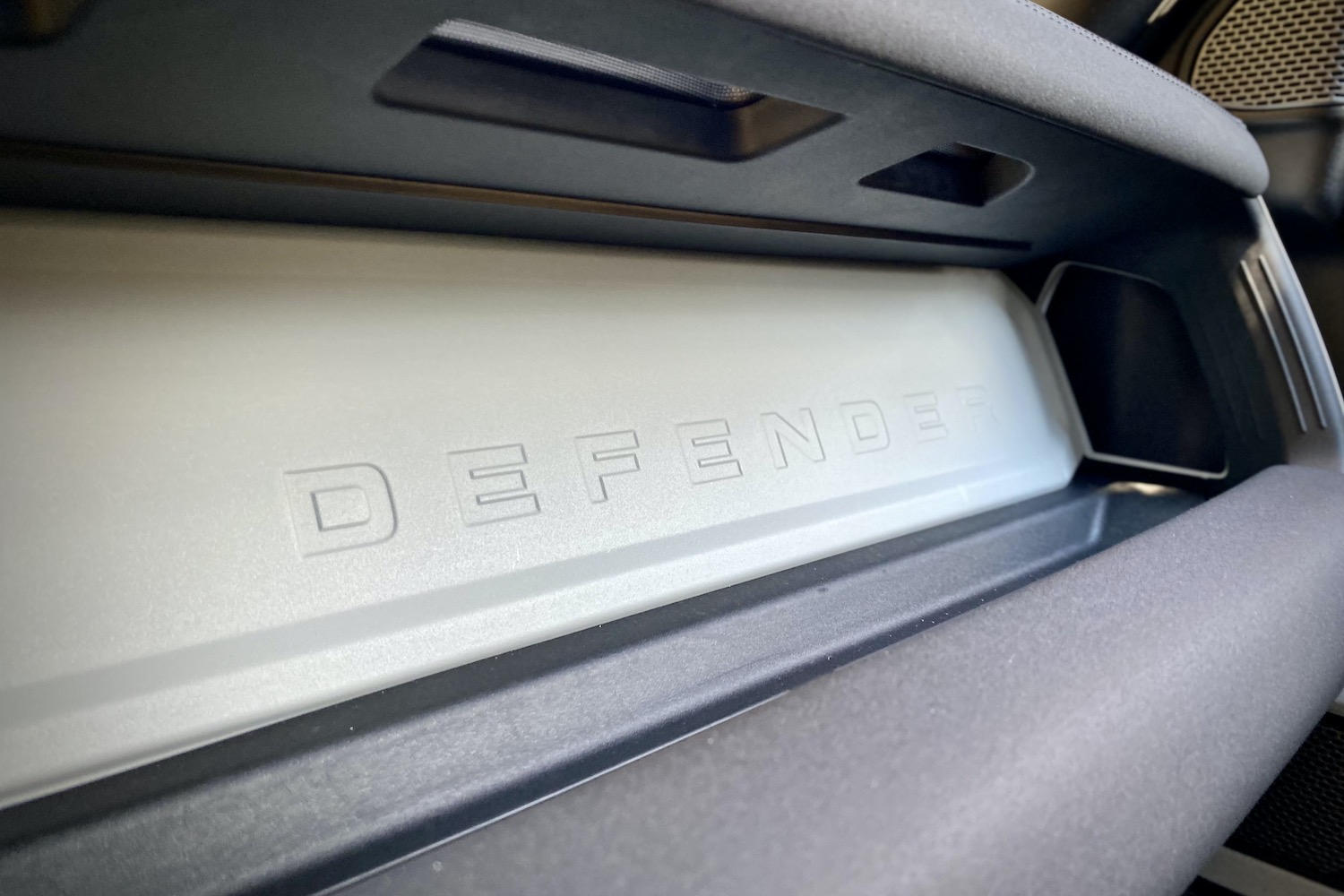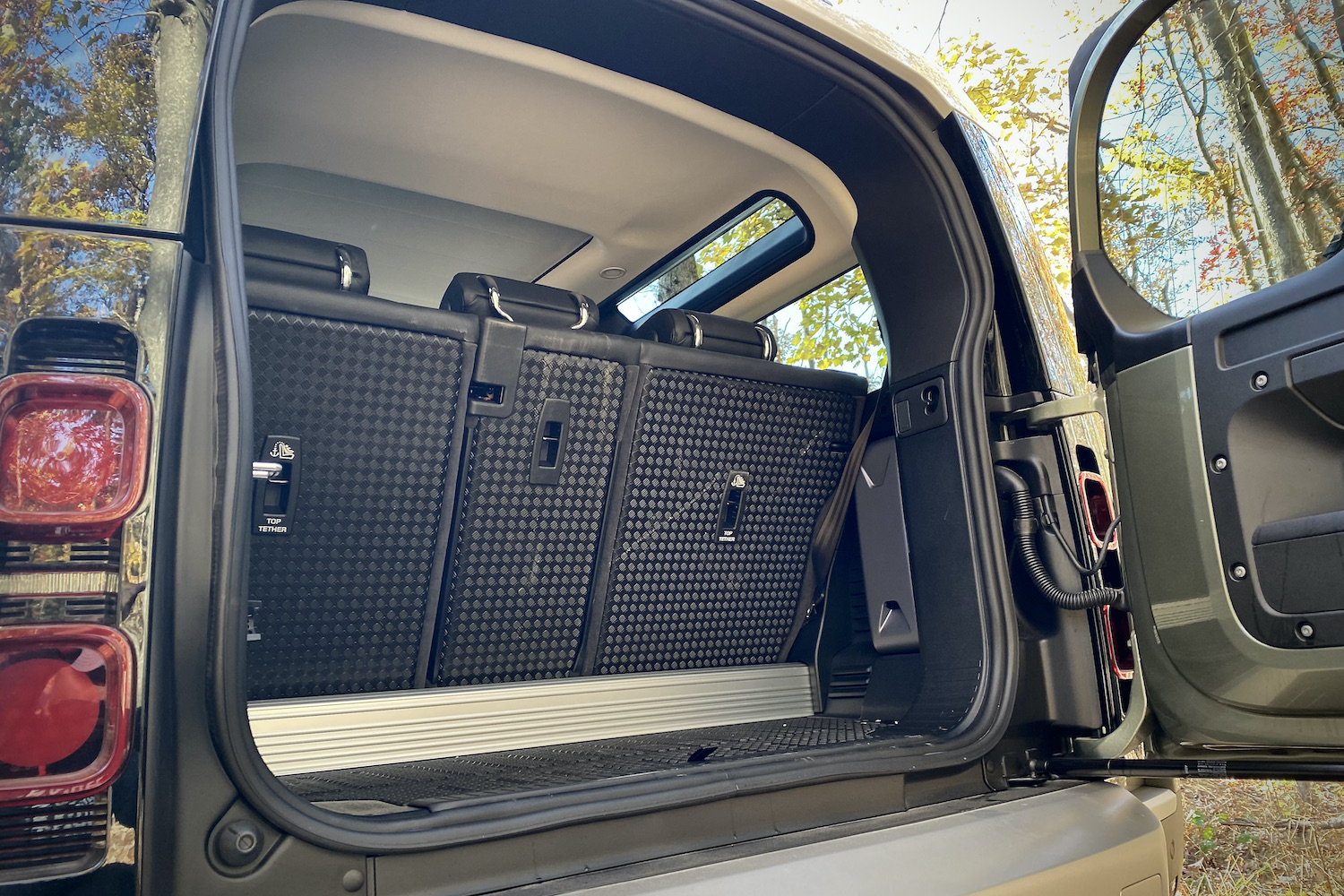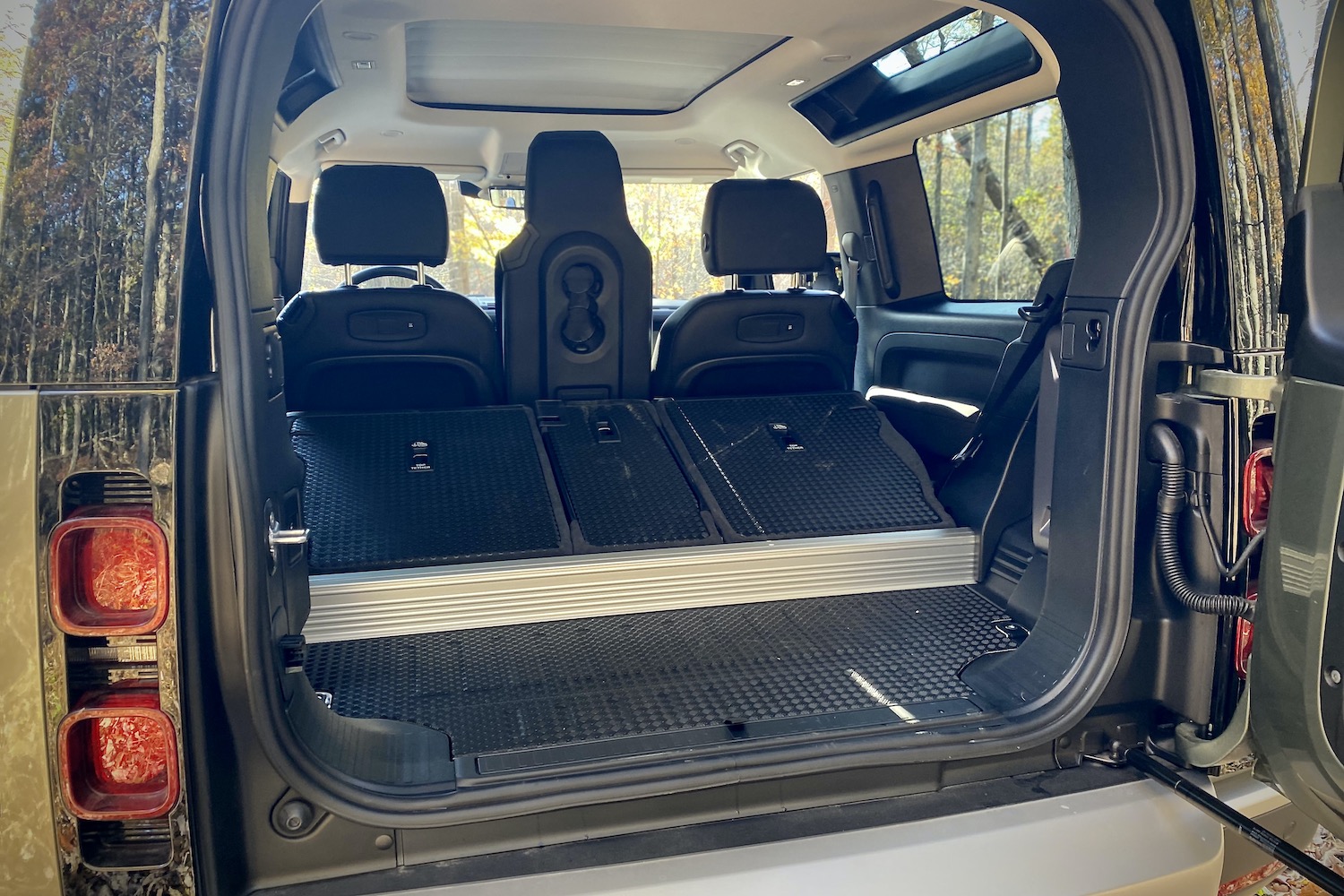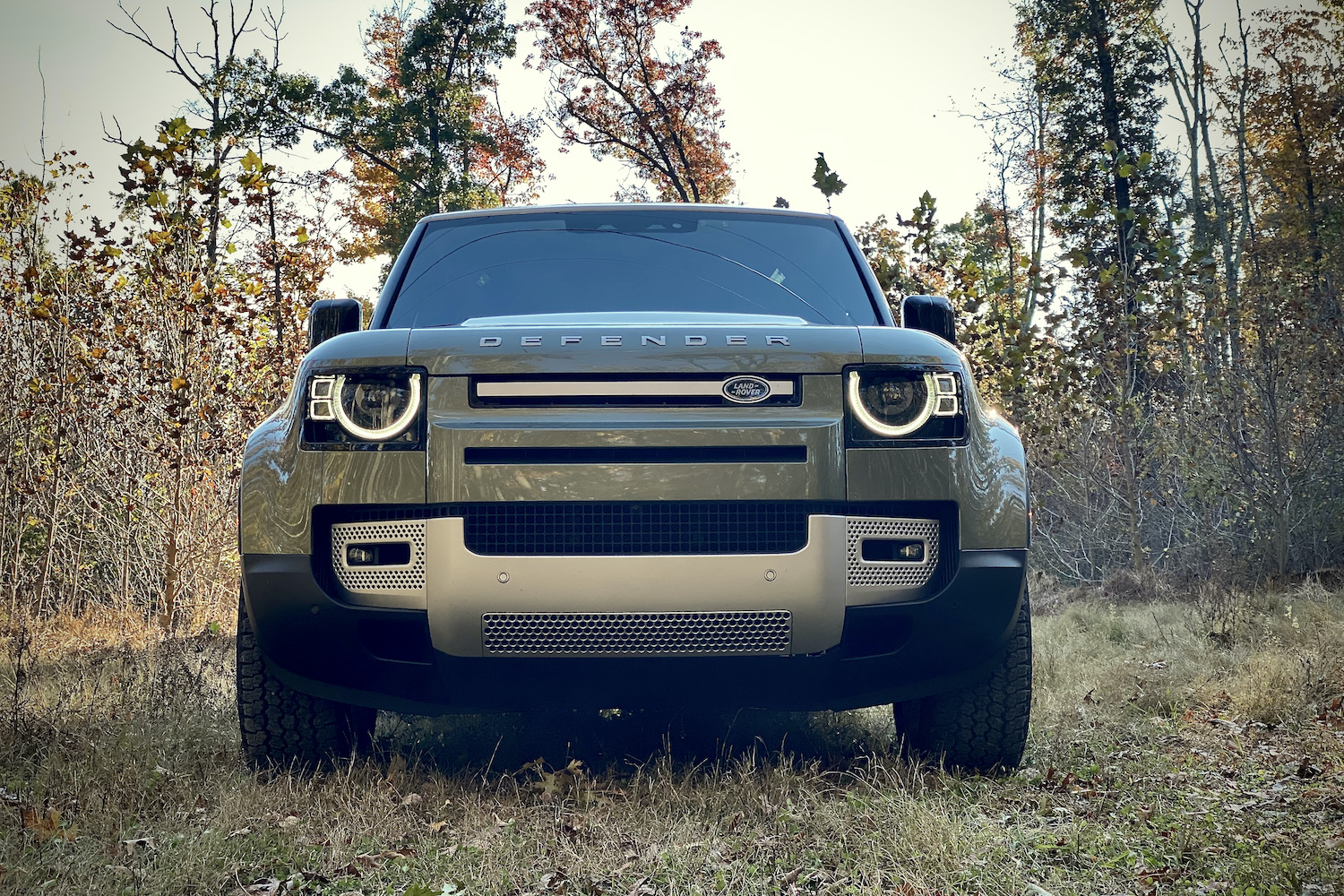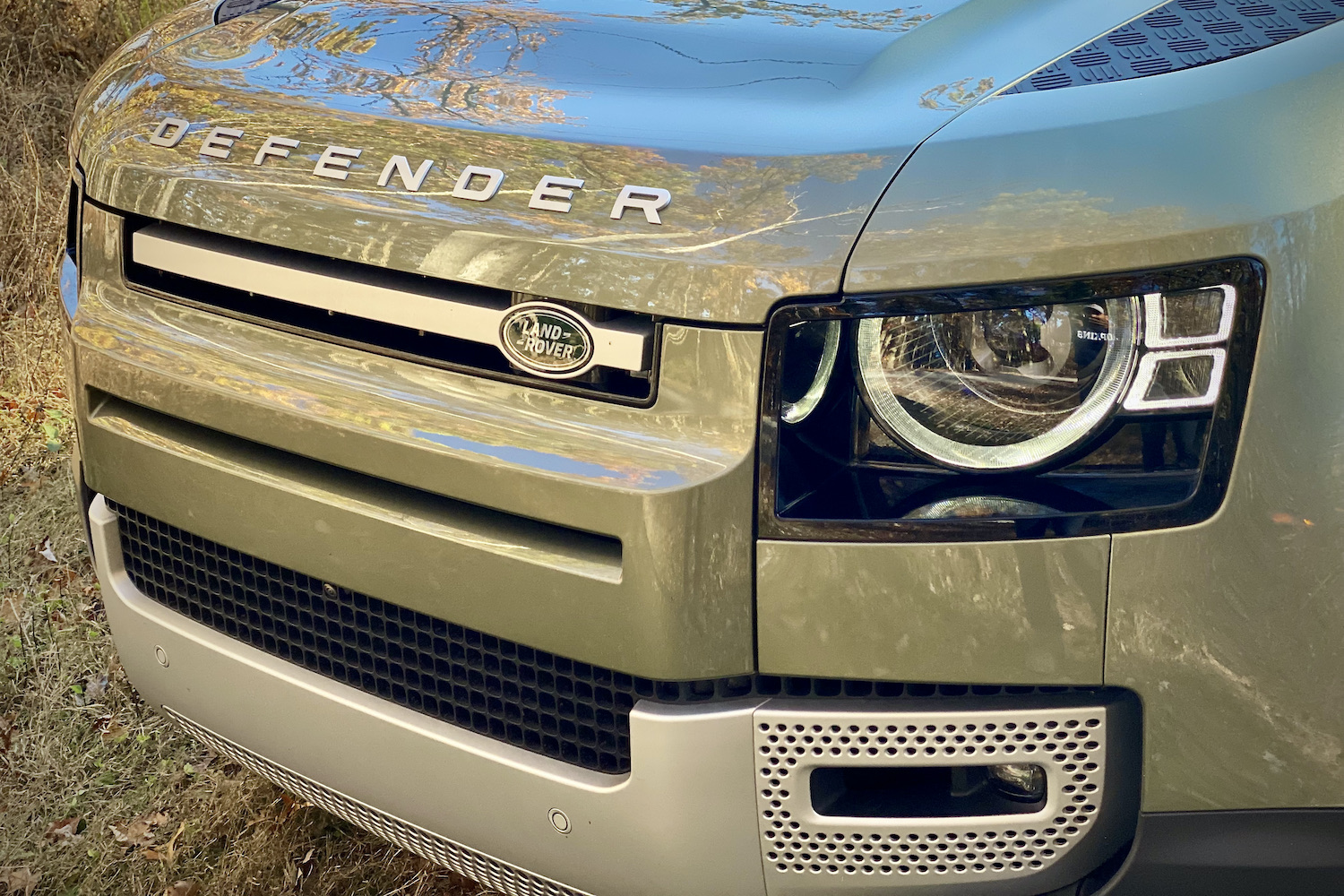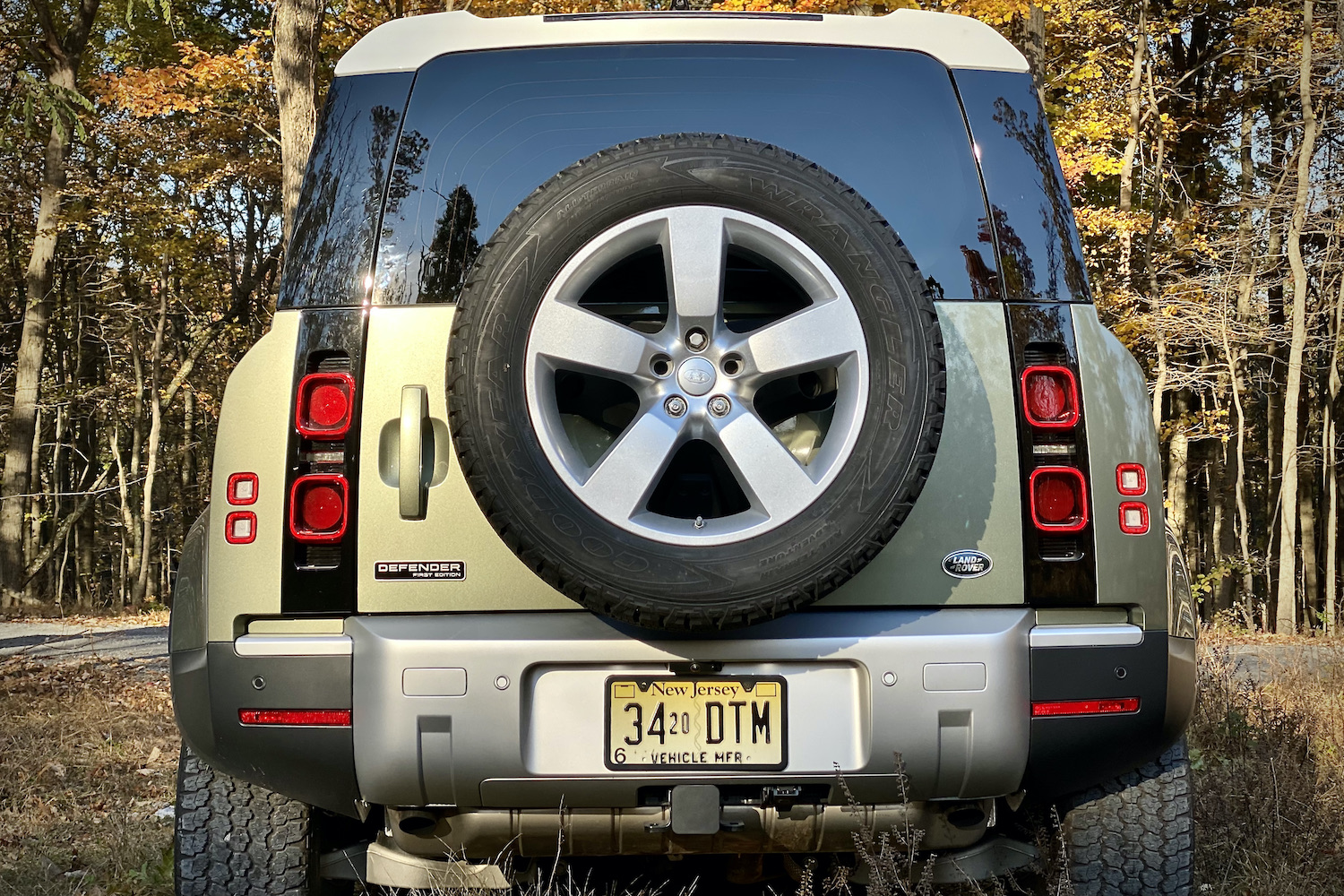One of my most cherished automotive moments behind the wheel of a vehicle was driving a 30-year old Arkonik Land Rover Defender around Lake Tahoe in an off-road excursion. The heavily modified, six-figure Defenders from the small, England-based shop take the humble SUV and turn it into a luxurious, modernish off-roader for individuals who have too much money. After a day of traversing grueling terrain in a few of Arkonik’s offerings, I yearned and daydreamed about owning a classic Defender. Unfortunately, or fortunately for my bank account, high prices and limited offerings quickly derailed that plan. Everyone, besides me, except for me, already knew that the Defender was the ultimate off-roader.
For everyone out there who isn’t interested in owning a rugged SUV that started out as a dependable farm vehicle, Land Rover recently resurrected the Defender name. The revived nameplate SUV is a hot, new take on the old model, but it hasn’t lost sight of the old Defender’s purpose. Underneath the luxurious cabin, high-tech features, and modern design, the new Defender has the same billy goat, go-anywhere attitude as the model from 30 years ago.
Sure, the Jeep Wrangler and Ford Bronco may offer nearly the same capability as the Defender, but those lack the panache, luxury, and on-road refinement as Land Rover’s comeback kid. Equally as cool and capable as its ancestor, the Defender is the supreme leader in the off-roading landscape. It’s the one to buy and the one that outdoes the rest.
Design and Interior
Just like the Defender that came out in 1990, the new Land Rover is available in 90 (two-door) and 110 (four-door) body styles. The First Edition trim is only available as a 90, which is a more fitting choice for the SUV. Boxy, muscular, and with the spare tire hanging off the back, the new Defender certainly borrows cues from its predecessor. It’s fresher and more upscale than either the Wrangler or Bronco while previewing its true intentions of wanting to climb the highest hill in any area.
I love the little subtle hints of the old Defender that you’ll find in the new SUV. The circular elements in the headlights, flared fenders, swing-out tailgate, and expansive rear windows look like Land Rover’s engineers designed the new model using the old one as a template. It’s fantastic. You don’t see nearly as many of these on the road as a Wrangler or even a Bronco, making them feel special based on their design alone. SUVs rarely do that.
The interior is much of the same. The cabin isn’t as sparse or as rough around the seams as the other off-roaders. Don’t get us wrong, it’s still utilitarian, but it straddles the line between functional and premium in a way that others can’t replicate. People who are familiar with other Land Rovers will find that the Defender has a familial sense to it. Exposed Torx-head bolts, a wide-open door structure, and heavy-duty rubber flooring point toward the Defender’s true purpose. But the way everything fits together comes off as being high-end. Plus, the cabin is quiet and the available soft-folding roof is a unique talking point.
Every passenger sits incredibly upright, almost as if you’re attending a class at an etiquette school on how to behave properly at dinner. Still, the seats are decently comfortable and the First Edition comes with a jump seat in the first row, increasing seating capacity to six. Good luck fitting a human in that seat, though. My sister who is 5 foot 3 inches and 115 pounds, a small human by every metric, felt trapped in the seat. And the rear seats, well those are impossible to get into in a dignified manner and are tight. Even for smaller humans.
There are a few ergonomic quibbles to report on. The dial for the volume is on the passenger’s side, air vents only cool and heat everything above your chest, the middle jump seat has two cupholders on the back that are unusable with the seat in use, and the climate control dials double as drive mode selectors and adjusters for the heated seats. These in no way decrease the Defender’s appeal, but certainly, they steepen the SUV’s learning curve. Additionally, we’d steer clear from the $900 jump seat. Its limited use doesn’t make the trade-off with losing a center console and usable cupholders worth it.
One major point to consider before purchasing a Defender is the lack of cargo space in the 90 body style. The two-door SUV offers just 15.6 cubic feet of cargo space behind the rear seats. If that number sounds small, it’s because it is. You’ll find more space in a Honda Accord. Don’t expect to go to Home Depot and come back with a 10-inch sliding miter saw if you need to use the rear seats.
Driving Experience
The Defender is available with a wide range of powertrains that start with a turbocharged four-cylinder engine and go up to a supercharged V8 engine. The First Edition comes with a turbocharged and supercharged 3.0-liter inline-six that’s the middle child of the family. The mild-hybrid P400 system produces 395 horsepower and 406 pound-feet of torque, which is plenty for the Defender. The SUV doesn’t have any issues blasting down the road and makes a decent sound when it does so, too.
On the open road, the Defender really showcases the benefits of its modern underpinnings. Unlike the previous Defender, the new SUV features unibody construction, fully independent suspension, and an available air suspension system that we highly recommend. These features give the Defender a refined, comfortable ride on-road that neither the Wrangler nor Bronco can match. Pair these characteristics with the Defender’s modern interior and the result is an SUV that you’ll actually want to drive every day or on a long trip without wanting to purposefully drive off a cliff. There’s no denying that the Defender is a highly capable machine off-road, but where it truly shines against the competition is on-road.
Land Rover packs the Defender with serious off-road hardware. All-wheel-drive, a two-speed transfer case, Configurable Terrain Response, and available adjustable air suspension result in an SUV that really can go anywhere. The Terrain Response system lets the driver choose between things like rocks, mud, and sand, with the available Terrain Response 2 system being even more capable. You’ll have to live in the woods or go off-roading up the side of a volcano to need that system. With up to 11.5 inches of ground clearance and the ability to ford through 35 inches of water, there’s not a lot of terrains that can make the Defender sweat.
The Land Rover’s high-tech features make off-roading simple. There are a multitude of cameras to choose from, giving you multiple views out of the SUV. But, Land Rover’s engineers have also built the rugged body to be good without any trickery. The SUV has an approach angle of 38 degrees, a departure angle of 40 degrees, and a break-over angle of 31 degrees. For enthusiasts who aren’t interested in the off-roading wizardry, the base Defender offers plenty of capability in an undiluted package.
Put all of this together, and you’ve got an SUV that can get you to the starting point of your off-roading excursion in luxury, get you through the trail with ease while making you look like you’re an off-roading maestro, and then get you back home in peace. The Defender is so multifaceted and capable, that you forget that you’re in something that can traverse terrain like a goat in the Argan Forest in Morocco. That alone makes the Defender special.
Should You Get One?
Oh yeah, definitely. The Land Rover Defender earned its iconic status for being a sturdy farm vehicle — back when it was called the Series I — and then for being something that could reach the most remote places on the planet. The new one, while not nearly as rugged or as devoted to being a machine for the commoner, is every bit as capable. It tackles a mountain as well as a Sherpa and manages to be luxurious in instances when you have to travel across town to get a sandwich. It’s one of the few SUVs to give you the best of both worlds. Expensive? Yes. But it does things others can’t.




